I am working on creating graphs with vertices and edges. The graph is directed, so the edges are represented as arrows. My problem is getting the correct coordinates for the arrows.
A Vertex has a Coordinate (see class below), while an Edge goes from a Vertex to another Vertex. The challenge is that a vertex is drawn with a fixed radius (see picture below). I'm having problems getting the arrow pointing to the correct place on the circles circumference. It seems like with the code I currently have, the arrow points to the top-left corner, not the closest point.
I have the following method for drawing the arrows:
public static void drawArrow(Graphics g, Color color, int size,
Coordinate from, Coordinate to, Coordinate offset) {
Graphics2D g2 = (Graphics2D) g.create();
g2.setColor(color);
double dx = to.x - from.x, dy = to.y - from.y;
double angle = Math.atan2(dy, dx);
int len = (int) Math.sqrt(dx*dx + dy*dy);
AffineTransform at = AffineTransform.getTranslateInstance(from.x + offset.x, from.y + offset.y);
at.concatenate(AffineTransform.getRotateInstance(angle));
g2.transform(at);
// Draw horizontal arrow starting in (0, 0)
g2.drawLine(0, 0, len, 0);
g2.fillPolygon(new int[] {len, len-size, len-size, len},
new int[] {0, -size, size, 0}, 4);
}
I got the essentials of the arrow code from an answer by aioobe, here.
I this method by overriding Edge's paintComponent function:
@Override
public void paintComponent(Graphics g) {
double radius = this.from.getRadius();
Coordinate vector = this.from.getPosition().clone();
vector.normalize();
vector.x = vector.x * radius; vector.y = vector.y * radius;
Coordinate to = new Coordinate(this.to.getPosition().x - vector.x,
this.to.getPosition().y - vector.y);
GraphicsUtils.drawArrow(g, this.color, ARROW_SIZE,
this.from.getPosition(), to,
new Coordinate(radius, radius));
}
As the drawArrow method does what it's supposed to, it draws an arrow from a to b, I want to change the way that I am calling it in the above method. For example, by using the offset parameter for the drawArrow method or something alike.
The Coordinate class:
public class Coordinate {
public double x;
public double y;
...
public void normalize() {
double length = Math.sqrt(Math.pow(this.x, 2) + Math.pow(this.y, 2));
this.x = this.x / length;
this.y = this.y / length;
}
...
}
A screenshot of my current output:

Note there are both arrows from D to E and E to D. The latter is not showing because the arrow head is behind D's circle.
Now to be clear, the problem is:
In the paintComponent-method, I am taking the radius of the circle and multiplying it with the normalized (see method) vector. This would give me a point of the circle's circumference, but it seems that always results in the top-left corner, which I don't get. I want to calculate the point on the circumference closest to the source vertex.
Like so:

Any suggestions?